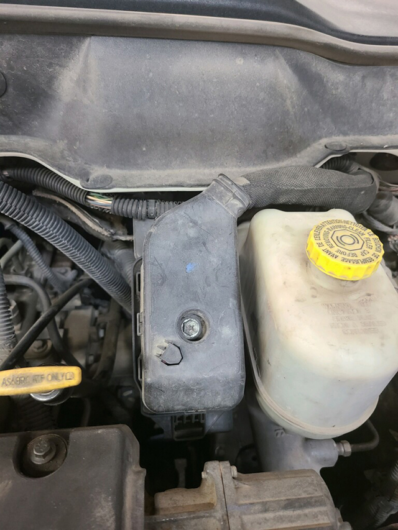The APP Sensor & CODE P2127

What is an accelerator pedal position sensor (APPS) and is it not simply a throttle position sensor (TPS)? Good questions. The ’94-’98 models equipped with a 12-valve engine and an automatic transmission utilized a TPS. This sensor controlled shift timing and overdrive lockup. The 1998.5-to-present turbo diesels utilize an APPS for engine control and it provides input for automatic transmission (if so equipped). The 2005 to present Turbo Diesels continue to utilize the APPS. However, the sensor has been moved inside the truck and is part of the throttle pedal assembly.
Let’s go back to the easy-to-understand ’94-’98 12-valve engine. The TPS is actually a rheostat or potentiometer, with three electrical terminals [reference voltage, ground (called a return in most Mopar service info) and signal]. The signal has a varying voltage relative to throttle position, less at idle and more at wide open throttle (WOT). Example: at idle 0.6 volts which can increase to approximately 4 volts at WOT. To really keep this simple, think of the TPS as the volume control on an old stereo system.
The APPS, however, is a multifunction device containing two sensors and six electrical pins—reference voltage (2), returns (2), and two signals—labelled app1 and app2. In the more current model year Turbo Diesels, APP1 signal voltage ranges from 0 to 5 volts and APP2 is one-half of APP1—so 0 to 2.5. The engine control module (ECM) will take these voltage signals and, combined with other ECM inputs, control fueling. The transmission controller will use these inputs also. Thus, “drive by wire.”
The theory of operation and wiring varies a bit depending on the year of your truck, so let’s use this general information to help us understand some problems you may encounter.
Problem: DTC P2127
This is a fairly common problem to Third and Fourth Generation Turbo Diesels. An intermittent DTC P2127 code appears, with the complaint often being no acceleration when the throttle is depressed. This truck that needed repair was a cab chassis that was upfitted to an ambulance. Reliability is of paramount concern and it is very important that it not enter limp-in (dead pedal) mode during a patient transport. Often these vehicles will already have new Mopar throttle pedals installed. Some will also have a new Mopar wiring connector that connects the harness to the APPS. Yet, the pesky P2127 persists, and I’m the lucky guy that gets to further troubleshoot the problem. A Tech Connect Mopar subscription will allow me to search of “P2127” once a VIN is entered. It will launch a 7 page “trouble tree” with a wiring diagram and connector pin outs. My technician friend at a local dealership provided me with a Star Bulletin that discusses connector C130 being problematic for this DTC code. So, let’s take a look at the C130.

The C130 firewall connector is located next to the brake fluid reservoir. Often the connector will be clean. But a wiring overlay of APP2 Signal and/or APP1 Signal wires will often resolve a low voltage input to the ECM (0 to .25 volts, which sets the code) causing the “dead pedal concern.” In a bind for backordered pins/wire overlay, I have temporarily repaired the connector by gently closing/tightening the female pins for APP1 and APP2.
I have also seen some broken wire strands (open circuit) or enough broken strands (severe voltage drop) inside the insulation to cause the problem.
As you try to troubleshoot wiring problems note that the in-cab APPS connector is routed from
the pedal assembly, through the firewall, along the wiper cowl by the brake booster and across to the connector C130. If you monitor APP2 on a scan tool while you move the wiring harness with your hand and notice a voltage variation, you can bet it is a wiring problem.
While on this topic, many transmission “limp in” or shifting issues can often be traced to damaged wiring. So check the engine-to-transmission connections, look for rotted vinyl split-loom tubing and look for places where a bracket might cause wiring insulation damage.
After a test drive of about 50 miles of stop-and-go driving with no further faults or low voltage, the P2127 was resolved with several new terminal pins.
Andy Redmond
TDR Writer
Article originally appeared in the The Turbo Diesel Register magazine, Issue 110, Pages 122-123














